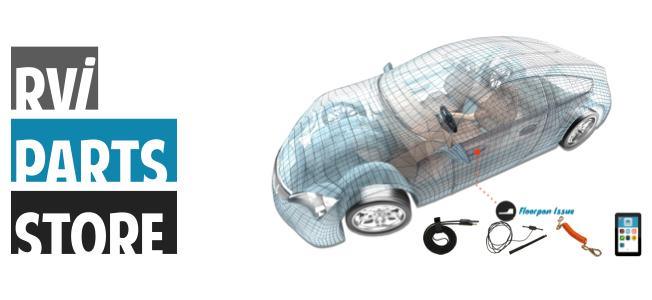Frequently Asked Questions
Why?
Q. Why do I need tire pressure sensors?
A. There is nothing worse than getting a slow leak or a flat tire on your towed vehicle and not knowing it. If your towed vehicle gets a blowout, serious damage can be done to the tire and wheel, especially if nothing is being reported.
How does it work?
Q. How long will it take for Tire Patrol to initially pair with the Command Center Tablet?
A. Initial pairing depends on the number of sensors, but each sensor starts transmitting and pairing as soon as it's threaded on.
Q. When I power down the tablet or Command Center, or should one of them lose power, will the sensors automatically re-connect?
A. Yes! After the Command Center is turned back on, the sensors will begin to re-connect. Re-connection is usually established within 2-4 minutes.
Q. Will the sensors re-connect with Command Center if I unthread the sensors from the valve stems and re-thread them on?
A. Yes, but before you thread the sensors back on, you'll need to make sure the Command Center hub and tablet are plugged in and powered on.
Q. How many tires can I monitor at once with Command Center and Tire Patrol?
A. 14. The 4-pack is designed specifically for any trailers, fifth wheels or towed vehicles with four wheels. The 6-pack is designed specifically for motorhomes, travel trailers, and fifth wheels with six tires. The Tag-pk 2 and 4 are designed to be used with the 6-pk for motorhomes with 8 and 10 tires.
Compatibility
Q. My towed vehicle already has factory tire pressure sensors. Will they work with the Command Center?
A. No, sensors made by your towed vehicle manufacturer only communicate with the on-board computer in the vehicle. If you want to monitor your tire pressure sensors from your coach using the Command Center, then you would need the the Tire Patrol.
Q. I have tire pressure sensors on my towed vehicle made by another company. Will they work with the Command Center?
A. No, the Command Center is only designed to communicate with the Tire Patrol and other "Works with Command Center" products.
Q. Will Tire Patrol work with any type of valve stems?
A. Yes, the light weight design of the Tire Patrol sensors are compatible with all valve stem types.
Note: Make sure the Schrader valve (push valve) in the valve stem is recessed and doesn't stick out above the lip of the valve stem. Failure to do so can lead to air leak if the sensor can't be threaded down all the way to make a good seal.
Maintenance
Q. Are Tire Patrol batteries self-replaceable?
A. No, the batteries are not self-replaceable. In an effort to prolong the life of the sensors, they are permanently sealed to keep out water and prevent corrosion. Tire Patrol batteries should last around one year if you thread them on and never take them off, and up to 3 years if you take them off regularly when not towing.
Q. Since the batteries aren't self-replaceable, what do I do when they die?
A. We have a battery replacement program. You send in your sensors, we put in a new battery, new inner and outer o-rings, update firmware and ship them back. When the time comes, call 800-815-2159.
Q. Do I need to re-balance my tires after I install the Tire Patrol Sensors?
A. No, the lightweight design does not affect the balance of the tires.
Q. Are Tire Patrol sensors compatible with nitrogen-filled tires?
A. Yes, nitrogen and tire pressure monitoring systems are completely compatible. A tire pressure system works exactly the same regardless of whether the tires are filled with air or nitrogen.
Setup
Q. How do I link Command Center to Tire Patrol?
A. Pairing is simple:
- Power on the Command Center tablet and hub.
- Click ADD DEVICE on the tablet dashboard. Command Center tablet will walk you step by step through the pairing process.
- Boom! You're a genius!
Q. Some sensors pair quickly and others take longer. What can I do for all of them to pair quickly?
A. For fastest pairing, bring the Command Center hub with you as you thread on each sensor during the pairing sequence.
Troubleshooting
Q. Why is my tire leaking when I thread on the sensor to my valve stem?
A. This is due to the Schrader valve not being fully seated or sticking out above the lip of the valve stem. Make sure the Schrader valve (push valve) in the valve stem is recessed and doesn't stick out above the lip of the valve stem. Failure to do so can lead to air leak if the sensor can't be threaded down all the way to make a good seal.







